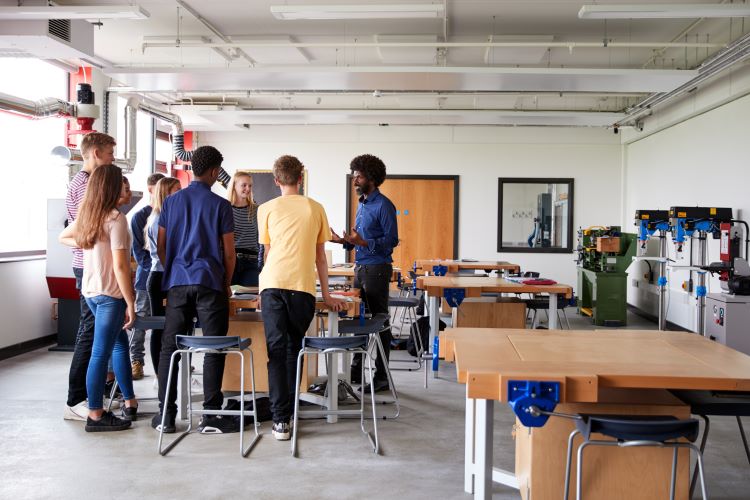Education consortium lays out plans to overhaul GCSE design and technology

by IBRAHIM
Education consortium lays out plans to overhaul GCSE design and technology

Backed by organisations such as the Royal Society of Arts, Design Council and Google, a revised curriculum led by Pearson sets its sights on tackling real-world issues.
Education publisher Pearson is working with leading arts organisations on a design and technology education curriculum proposal that moves away from the creation of consumer products and towards sustainable design solutions that seek to solve global challenges.
The proposal for an improved secondary school curriculum is backed by organisations including the Royal Society of Arts, The Ellen MacArthur Foundation, Design Council and Google. It comes after new research by Pearson revealed that over half out of a pool of 2200 secondary school teachers and leaders believe that “modernising the subject will benefit the curriculum”, according to Pearson.
Strengthening the role of the design within the secondary school education system is also supported by two thirds of art and design teachers, the research shows.
In recent years the whole education system has suffered right through from design and creative subjects at university level all the way down to secondary schools, where funding cuts have also threatened design and technology GCSE. The backdrop to this is the government’s pursuit of Science Technology English and Maths (STEM) over a STEAM curriculum, which also includes Arts subjects. This has rumbled on through successive governments.
A Pearson spokesperson says that, as well as consulting with leading individuals working in design, sustainability and manufacturing, it has also spoken with schools and higher education providers to “better understand some of the challenges and opportunities facing the subject”.
Organisers hope that with a renewed focus and some heavyweight backers the new curriculum will appeal to decision makers.
Since many of the products created in current design and technology classes are the type that end up in landfill, the new curriculum would steer students toward more sustainable outputs. This could result in innovative physical prototypes of products and spaces, or things like digital services, experiences, graphic communications, and interaction design.
Pearson’s senior vice president of UK schools Sharon Hague says they have seen “a national decline” in the number of students taking design and technology at GSCE level alongside a “shrinking teacher workforce” in the area. Queries have also been raised about the rising costs of the current infrastructure.
A new, more targeted curriculum should not only benefit students and give them the knowledge needed to solve real world problems, but also offer “much-needed security” to design teachers, Hague adds.
Research from the Design Council shows that seven in ten people working in the design industry today – which is around 1.38 million – studied design and technology at GCSE level, according to its CEO Minnie Moll. She believes that if this “crucial talent pipeline” is not nurtured, it could pose a major threat to the industry’s future, adding that it could not be more important at a time when “we need to re-design nearly every aspect of how we live our lives to tackle the climate emergency”.
The new holistic curriculum seeks to align with the United Nations 2030 Sustainable Development goals and the Department for Education’s aim to facilitate a globally renowned education sector in sustainability and climate change in the UK by 2030.
Colchester Prep and Highschool headteacher Karen Gracie-Langrick says that the proposed plans “lay the foundations for a 5-19 curriculum” that centres around themes such as “sustainability, circular economy, design thinking, systems thinking, collaboration, creativity and innovation”. Ultimately it should help to “augment art, craft and design pathways, and widen learner choice and progression routes”, Gracie-Langrick adds.
The next phase of the project is to work with policy makers and stakeholders on refining the proposal, including the Department of Education, to ensure that the new curriculum is “fit for the future”, says the Pearson spokesperson.
Banner image credit: Monkey Business Images on Shutterstock
Recommended Posts

NB invites local designers centre stage for Vineyard Theatre rebrand
February 24, 2023

“AI revolution” will change way design studios look within three years
February 24, 2023

Rbl rebrands ZSL with ecosystem-inspired identity
February 23, 2023

